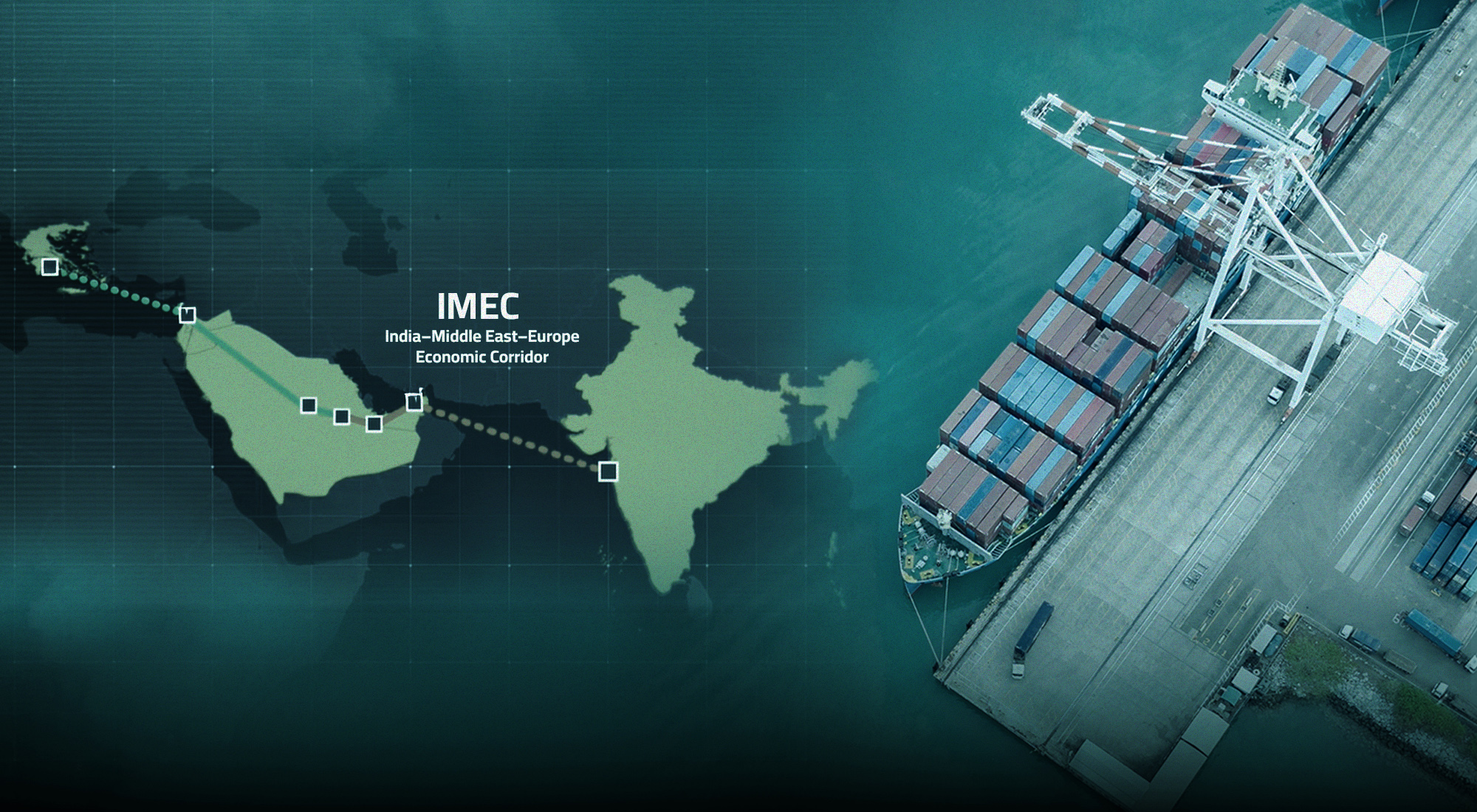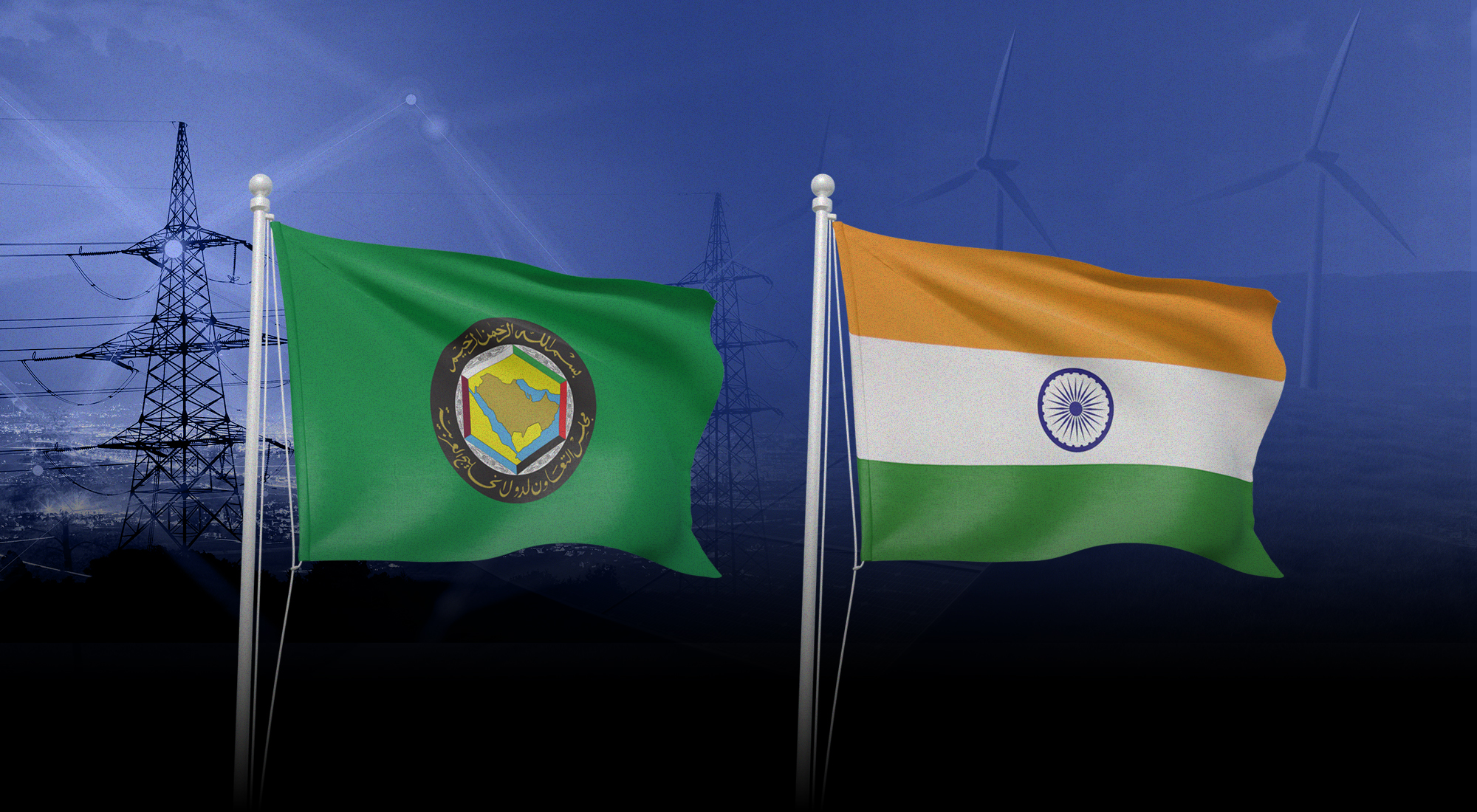China’s electric vehicle (EV) industry today stands as a centerpiece of Beijing’s strategic push both to revolutionize domestic transportation and to position China at the forefront of global high-tech manufacturing. What began as a government-led experiment in the early 2010s has, within little more than a decade, evolved into a sprawling industry—one that encompasses the extraction and refining of critical battery materials, world-class cell and component production, vehicle assembly and software integration.
Moreover, the EV industry expansion also advances China’s geopolitical posture across the globe amid the heightened competition with the EU and the United States. A longer-term perspective for China’s EV industry is positive as the country’s vast internal market, coupled with overseas expansion into regions such as Central Asia, the South Caucasus, Russia, Africa, and others, creates powerful incentives for growth.
Vitality of China’s EV Industry
Global EV supply chains depend on a handful of strategically vital minerals—lithium, cobalt, nickel, manganese, and graphite. While the Democratic Republic of the Congo (DRC), Australia, Chile, and Argentina possess a big share of these resources, China has pursued a strategy to internalize control over both upstream and refining operations.[1] For instance, Beijing has incentivized the development of large‐scale lithium brine extraction in Sichuan and Qinghai provinces. Simultaneously, state-owned enterprises acquired equity stakes in overseas mining ventures—from spodumene deposits in Australia to cobalt mines in the DRC. On the refining side, China’s share of global battery-grade lithium carbonate production stands at over 60 percent, with parallel controls of 75 percent of cathode and 85 percent of anode capacity.
This approach has three major benefits: it shields China’s battery makers from the price volatility that has plagued Western automakers; it enables a vertically integrated model in which raw materials flow directly into cell production; it enhances Beijing’s broader objective of reducing the transport sector’s dependence on imported oil—one of China’s key vulnerabilities given the persisting volatility in the Middle East and the exacerbating great power competition with the United States.
As a reflection of China’s EV industry success, the “New Energy Vehicle Industry Development Plan (2021-2035)” sets explicit targets, such as NEVs accounting for 20 percent of total auto sales by 2025, while providing guidelines for local governments to tailor subsidies and non-fiscal incentives.[2] On a more practical level, China’s EV market success also depends on the availability of charging spots. By late 2020, China boasted approximately 807,000 public charging piles and 874,000 private chargers. This is not enough, though, and the distribution of chargers across China still remains imbalanced.
China’s domestic EV landscape is highly competitive. In 2022 alone, some 239,400 new NEV-related companies were registered, exceeding 600,000, yet that same year witnessed the exit of approximately 52,000 firms amid price wars and capital constraints.[3] This competitive environment has favored vertically integrated players such as BYD, and by contrast, smaller startups must carve niches through the production of ultra-luxury EVs, specialized commercial vehicles, etc.
Relatedly, Chinese researchers are carrying out breakthroughs in silicon-dominant anodes, solid-state electrolytes, and fast-charging architectures that could slash charging times from hours to tens of minutes. In autonomy, Chinese companies are conducting pilot robo-taxi services in Shanghai and Guangzhou, harvesting data on complex cityscapes that Western counterparts seldom encounter.[4]
China’s cost and scale advantages underpin this competitiveness. Chinese EVs are often sold at prices 20-30% lower than comparable Western or Japanese models, due to cheaper batteries (domestic LFP batteries cost ~50% less than NMC alternatives) and local economies of scale. At the same time, China’s tech edge (fast charging, digital features, user experience) gives its vehicles broad appeal. Chinese officials rightly pride that Chinese NEVs are 3-5 years ahead of the world in technology.[5] More importantly, however, the Chinese EV carmakers have not only beaten their Western rivals in terms of production scale but also in ever-improving quality.[6]
Conquering New Markets
The advances made by China’s sprawling EV industry mean that the sector is actively looking abroad for expansion. China’s EV industry is now a major exporter. In the period of 2019-2023, the value of China’s EV exports jumped roughly 160-fold.[7] By 2023, China produced nearly 58 percent of global EVs,[8] while the exports of Chinese-made battery EVs (BEVs) reached about $34.1 billion (a 70% jump from 2022), with nearly 40% of that going to the European Union.[9] By late 2023, Chinese EVs had roughly 9.3% of the Western European BEV market (up from virtually zero five years earlier).[10] Major export models include BYD’s midsize cars and SAIC-GM-Wuling mini-EVs, as well as Tesla cars shipped from Shanghai. In 2023, China exported plug-in hybrids worth $4.3 billion to markets like Southeast Asia and Russia. In 2024, China’s passenger-car exports climbed nearly 20 percent and reached a staggering 4.9 million units, surpassing the United States as the world’s largest vehicle exporter. Chinese battery suppliers are likewise investing in Hungary, Thailand, and the United States to position themselves as providers of affordable green mobility in emerging economies.
There is also a geopolitical component. U.S. and EU tariffs imposed on Chinese EV car models pushed Beijing to reach out to other regions. The Middle East is one of them, and Chinese companies are duly making progress in adjusting EVs and their batteries to the hot climate. Moreover, Chinese companies are tapping into the emerging opportunities in the Middle East. Though associated with heavy reliance on oil and gas, the region is in fact amid its own silent revolution, which aims at lessening the dependence on fossils.
The UAE and Saudi Arabia are good examples, with the Net Zero 2050 and the Vision 2030 championing green infrastructure and clean energy projects, which effectively means embracing the introduction of EVs.[11] The UAE is regarded by the Chinese side as a door into the wider Middle East—in 2024, Chinese Nio established a joint venture with Abu Dhabi’s CYVN Holdings to produce and expand EVs across the region.[12] Overall, up to ten Chinese EV companies plan to manufacture cars in Saudi Arabia and the UAE.[13] Chinese companies are also looking into the Maghreb region, where deals were made with Algerian and Egyptian companies for domestic production and regional distribution.[14] Morocco is another country seeing Chinese investments in the EV industry.[15]
Beyond the West, China also looks into other less expected regions. Increasingly, Central Asia is seen by Chinese car-producing companies as a lucrative market for EV and green energy technologies. Recent investments highlight this trend. For instance, the Uzbek president toured the headquarters of BYD, a leading Chinese electric vehicle manufacturer, during his January 2024 visit. The two countries marked the start of construction for a facility in Uzbekistan’s Jizzakh region, which aims to produce 50,000 hybrid and electric vehicles annually, potentially scaling to 300,000.[16] Additionally, China’s Dongfeng has recently unveiled plans to build an automobile manufacturing plant in Uzbekistan.[17] These vehicles will be exported to regional markets, including Russia, where demand has risen due to Western sanctions. This expansion fits into a broader shift in China’s investment strategy in Central Asia. If, since the 1990s, China’s investments in Central Asia largely focused on big projects tied to resource extraction and physical infrastructure, such as pipelines, roads, and east-west railway connectivity, Beijing has recently begun prioritizing green energy initiatives, particularly in Kazakhstan and Uzbekistan.
Further westward, in the South Caucasus, in 2024, China exported 15,471 hybrid and EVs imported into Azerbaijan (in total worth $396 million), a 4,636-vehicle increase in comparison with what was recorded a year earlier. Relatedly, in July 2024, Electrify Azerbaijan LLC, a subsidiary of Baku-based SARDA Group, reached an agreement with BYD, China’s biggest EV car producer. The sides agreed on jointly producing electric buses in Azerbaijan. Another deal was reached in 2024 between the Chinese car company Nio with Azerbaijan’s Green Car LLC.[18] The agreement essentially is about facilitating the distribution of Chinese cars across the South Caucasus countries and potentially beyond. Indeed, given Azerbaijan’s geographic location, from the Chinese perspective, it could serve as a door to the Chinese EV and hybrid car expansion into the rest of the South Caucasus.
Challenges
Despite its strengths, China’s EV sector faces a set of vulnerabilities too. One of them is overcapacity, as production often outstrips demand: apart from a few leaders (e.g., BYD), smaller makers have a hard time selling their production. This fuels export surges, which in turn draw Western accusations of dumping.[19]
Raw material dependence is another concern. As noted, China must import much of its lithium, cobalt and nickel. While it dominates refining, supply bottlenecks or price spikes could be disruptive. Indeed, studies warn that surges in critical mineral prices could significantly slow EV adoption in China.[20] China has already faced volatility: for instance, lithium prices spiked 5-fold in 2022 before recent declines. To mitigate this, China continues to secure foreign mines (e.g., stakes in Chile and the DRC) and to encourage the recycling of batteries. Developing domestic alternatives (e.g., sodium-ion batteries, cobalt-free chemistries) is also a priority to hedge resource risk.[21] Relatedly, component shortages have emerged (especially semiconductor chips and precision parts). Sophisticated chips (for ADAS/autonomy) are still largely imported. Similar issues apply to other specialty inputs (auto-grade steel, aluminum, etc.), although China’s large manufacturing base mitigates these somewhat.
Finally, geopolitical and trade tensions are perhaps the biggest challenges that China’s EV industry could face. The EU, the U.S., Canada, and the UK have begun levying tariffs and probes on Chinese EVs, citing excess capacity or national security (e.g., sensor data concerns). These actions aim to reshape existing supply chains. Despite the fact that Chinese exporters are diversifying into markets in Asia, Africa and South America, superficial trade barriers could negatively impact China’s car industries.[22] Indeed, for the Chinese carmakers, the Western countries still are the most lucrative market where purchasing power far outstrips Middle Eastern, African and Latin American potential.
Then there is also a belief in Western countries that China, with its EV ambitions, wants to subvert the U.S. and the EU’s economic power. This fuels the sentiment of great power competition and sees Beijing’s EV ambitions exclusively from a narrow geopolitical perspective, namely that the Chinese companies might be using their vehicle technologies for surveillance operations against Western countries.[23]
Despite the existing economic challenges, the EV market is set to expand over the next decade, and car sales could reach half a million by 2035. Despite the EU’s and the U.S.’ ever stringent approach to China’s EV export, the country is expected to be both a major market for EV car sales as well as a leading producer of the cars. This projection is consistent with the battery technology improvements and charging infrastructure that are taking place across China. But most of all, Chinese cars are cheaper and are expected to remain so in the immediate future. Given the country’s drive to further minimize exposure to external supply chains, the development and sale of Chinese EV cars are expected to face less pressure. Geopolitical tensions, however, could undermine a positive outlook. Instability around the intermittent imposition of tariffs often contributes to sales and production slowdown, meaning that much will depend on how the U.S.-China relations develop over the next years.
Looking Ahead
To sustain the present technological edge, China will need to transition from broad-based subsidies to targeted, market-discipline mechanisms; accelerate indigenous semiconductor and advanced-materials programs; and expand partnerships in emerging markets that can alleviate the bottlenecks created by tariffs and anti-subsidy measures by the EU and the United States. Balancing these dimensions will help China entrench its role not merely as a manufacturing powerhouse but also as the center of the ongoing automotive revolution. The latter will play a major role in the great power competition with the U.S., which is playing out increasingly in the technology sphere. To alleviate pressure from the U.S. and the EU, China will continue expanding its EV reach to new regions, especially in the Middle East, Africa and Central Asia.
Emil Avdaliani is a professor of international relations at the European University in Tbilisi, Georgia, and a scholar of Silk Roads. He can be reached on Twitter/X at @emilavdaliani.
[1] “China has moved to curb supply of critical minerals. Can Australia seize the moment?,” UTS, April 17, 2025, https://www.uts.edu.au/news/2025/04/china-has-moved-to-curb-supply-of-critical-minerals-can-australia-seize-the-moment#:~:text=China’s%20new%20playbook%20It%20leverages%20China’s%20near%2Dtotal,control%20nearly%20100%%20of%20national%20mining%20quotas.
[2] Xiaofeng Li, Ming Du, “China’s Green Industrial Policy and World Trade Law,” Research Gate, January, 2025, https://www.researchgate.net/publication/388361153_China’s_Green_Industrial_Policy_and_World_Trade_Law.
[3] “Driving Forward: Exploring China’s Dynamic Automotive Market,” PTL-Group, September 11, 2024, https://www.ptl-group.com/blog/driving-forward-exploring-chinas-dynamic-automotive-market/.
[4] “Chinese city launches robotaxi routes linking downtown, transportation hubs,” Xinhua, February 21, 2025, https://english.news.cn/20250221/316bb6483d5c4d3d80a8c583fc8f96e6/c.html.
[5] Zachary Shahan, “China Dominates Global EV Industry,” CleanTechnica, February 19, 2025, https://cleantechnica.com/2025/02/19/china-dominates-global-ev-industry/#:~:text=the%20four%20raw%20materials%20analysed,battery%20capacity%20in%20electric%20cars
[6] Chris Westfall, “China’s Dominance In EVs Is A Warning For U.S. Automakers,” Forbes, December 30, 2024, https://www.forbes.com/sites/chriswestfall/2024/12/30/chinas-dominance-in-evs-is-a-warning-for-us-automakers/.
[7] “Q&A: The global ‘trade war’ over China’s booming EV industry,” Carbon Brief, August 28, 2024, https://www.carbonbrief.org/qa-the-global-trade-war-over-chinas-booming-ev-industry/#:~:text=Meanwhile%2C%20EV%20exports%20from%20China,2023%2C%20triggering%20fears%20of%20%E2%80%9Covercapacity%E2%80%9D.
[8] Otília Sári, “How China’s EV expansion is transforming the Middle East’s auto market,” Eurasia Magazine, May 13, 2025, https://eurasiamagazine.com/how-chinas-ev-expansion-is-transforming-the-middle-easts-auto-market.
[9] Joseph Webster, “China has become an electric vehicle export behemoth. How should the US and EU respond?,” Atlantic Council, February 29, 2024, https://www.atlanticcouncil.org/blogs/new-atlanticist/china-has-become-an-electric-vehicle-export-behemoth-how-should-the-us-and-eu-respond/#:~:text=China%E2%80%99s%20overall%20BEV%20exports%20rose,shipments%20in%20the%20same%20year.
[10] Joseph Webster, “China has become an electric vehicle export behemoth. How should the US and EU respond?,” Atlantic Council, February 29, 2024, https://www.atlanticcouncil.org/blogs/new-atlanticist/china-has-become-an-electric-vehicle-export-behemoth-how-should-the-us-and-eu-respond/#:~:text=China%E2%80%99s%20overall%20BEV%20exports%20rose,shipments%20in%20the%20same%20year.
[11] “UAE Net Zero 2050,” UAE, May 20, 2025, https://u.ae/en/more/uae-net-zero-2050#:~:text=Strategic%20alignment,compared%20to%20pre%2Dindustrial%20levels.
[12] Phate Zhang, “Nio, CYVN form JV Nio MENA to tap Middle East and North Africa markets,” Cnevpost, October 5, 2024, https://cnevpost.com/2024/10/05/nio-cyvn-form-nio-mena/.
[13] Giulia Interesse, “Middle East Pivot for Chinese EV Firms: Dealmaking, Market Sales,” Middle East Briefing, September 17, 2024, https://www.middleeastbriefing.com/news/middle-east-pivot-for-chinese-ev-firms-dealmaking-market-sales/.
[14] Jeffrey Reeves, “China’s Expanding Influence in the Middle East and North Africa,” Peace Diplomacy, February 14, 2025, https://peacediplomacy.org/2025/02/24/chinas-expanding-influence-in-the-middle-east-and-north-africa/.
[15] “Made in Morocco: how China’s EV battery makers are powering past Western tariffs,” Yahoo, February 2, 2025, https://finance.yahoo.com/news/made-morocco-chinas-ev-battery-093000438.html.
[16] “BYD hosts Presidential Visit at BYD Uzbekistan Factory and Formalizes Green Transportation Agreement,” BYD, July 5, 2024, https://www.bydglobal.com/en/news/2024-07-05/BYD-hosts-Presidential-Visit-at-BYD-Uzbekistan-Factory-and-Formalizes-Green-Transportation-Agreement.
[17] “China’s Dongfeng proposes modern auto plant in Uzbekistan’s Surkhandarya region,” Daryo, May 18, 2015, https://daryo.uz/en/2025/05/18/chinas-dongfeng-proposes-modern-auto-plant-in-uzbekistans-surkhandarya-region#:~:text=Uzbekistan’s%20Surkhandarya%20region-,China’s%20Dongfeng%20proposes%20modern%20auto%20plant%20in%20Uzbekistan’s%20Surkhandarya%20region,an%20advanced%20vehicle%20manufacturing%20facility.
[18] “Commentary: Addressing China’s growing electric vehicle footprint in Azerbaijan,” Eurasianet, March 17, 2025, https://eurasianet.org/commentary-addressing-chinas-growing-electric-vehicle-footprint-in-azerbaijan
[19] Ilaria Mazzocco, “Electrifying: How China Built an EV Industry in a Decade,” Marco Polo, July 8, 2020, https://archivemacropolo.org/analysis/china-electric-vehicle-ev-industry/?rp=e.
[20] “China’s electric vehicle and climate ambitions jeopardized by surging critical material prices,” Nature, 2023, https://www.nature.com/articles/s41467-023-36957-4#:~:text=However%2C%20the%20expected%20surge%20in,that%20under%20a%20high%20material.
[21] “Lithium prices hit record high as market pricing takes hold – 2022 in review,” Benchmark Source, December 14, 2022, https://source.benchmarkminerals.com/article/lithium-prices-hit-record-high-as-market-pricing-takes-hold-2022-in-review.
[22] Ahmed Mehdi, Tom Moerenhout, “The IRA and the US Battery Supply Chain: Background and Key Drivers,” Center for Global Energy Policy, June 8, 2023, https://www.energypolicy.columbia.edu/publications/the-ira-and-the-us-battery-supply-chain-background-and-key-drivers/#:~:text=Ukraine%20conflict%20and%20anxieties%20over,xx.
[23] Ben Riley-Smith, “Electric cars threaten national security, defence chiefs warn,” The Telegraph, April 17, 2025, https://www.telegraph.co.uk/politics/2025/04/17/electric-cars-threaten-national-security-defence-chiefs-war/.








